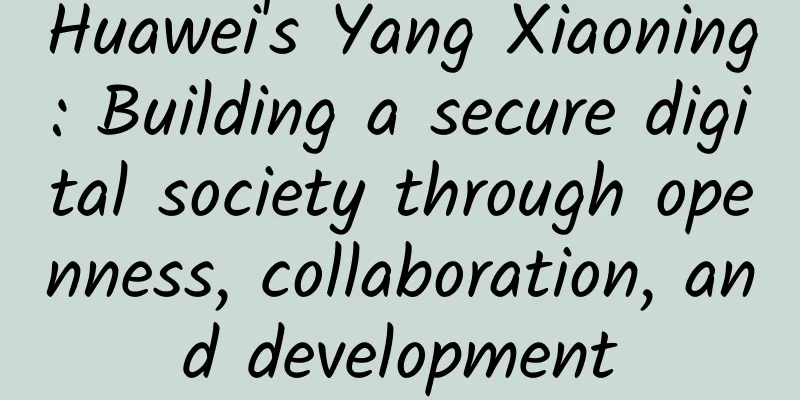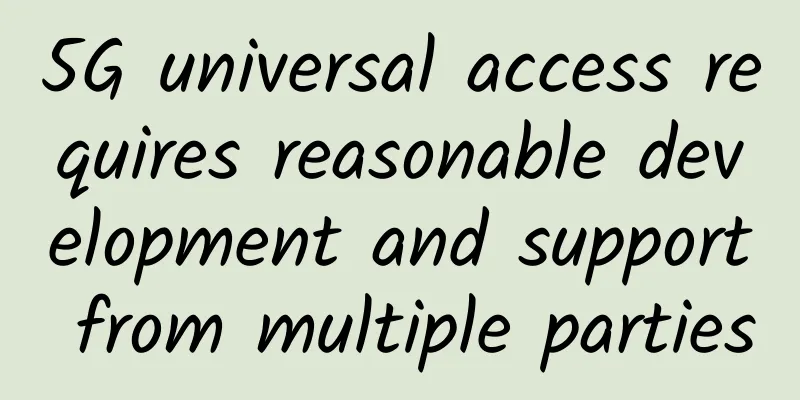5G new call concepts and key technologies

Labs GuideThe pursuit of communication technology has always been to break through the limitations of space and continuously narrow the distance between people. Now that the 5G era has arrived, 5G's explosive services are still in the making. How will the call service, as a basic communication capability, develop next? This article will analyze and discuss the concepts and key technologies related to the new 5G calls proposed by operators.
1. Brief introduction to the development of call servicesIt has been nearly 150 years since the invention of wired telephones. When they were first invented, the call distance was short and the efficiency was low. With the continuous advancement and improvement of communication technology and switching technology, the call distance has been continuously broken through. In the era of wired telephones, basic voice calls were achieved through dedicated lines, which initially enabled people thousands of miles apart to hear each other's voices. In the 1G and 2G era, radio technology freed calls from wires and removed spatial restrictions, so that calls could be made anytime and anywhere through mobile phones. Communications services are mainly aimed at the basic voice and SMS markets, and network technology focuses on ensuring timely voice/SMS delivery, clear voice, and wide network coverage. In the 3G and 4G era, with the substantial increase in network technology speed and bandwidth, real-time call services are still dominated by the voice market. The sound quality has achieved high-definition HD sound quality transmission and supports telephone conferences. On the basis of audio calls, the video market has begun to expand and support video calls. How to use bandwidth more efficiently has become the focus of business exploration, and various value-added services have continued to emerge. Everyone has paid attention to the need for waiting time before the call is connected. Audio and video ringtones, call assistants after the call, and text message reminders for missed calls have begun to appear. Services and experience have been constantly upgraded. Looking at the history of real-time communication services, the evolution of networks and the iteration of technologies have enabled a number of services to move from conception to commercial use. In this process, operators' calls have always been a symbol of high quality and reliability. At present, 5G and the future era of digital life provide more room for imagination for new real-time communication services. 2. What is 5G New Call5G New Call is an attempt by operators to introduce a new call concept. Although the name is call, it is not limited to calls, but also real-time immersive interaction. The "5G VoNR+ White Paper" released by China Mobile Research Institute gives the corresponding concept. VoNR+ (5G New Voice) refers to a new data transmission channel based on 5G VoNR multimedia real-time communication, providing users with richer real-time interactive services in addition to high-definition audio and video, and establishing a unified and open network architecture centered on the multimedia real-time communication capability platform, so as to achieve agile development and rapid deployment of innovative services on the basis of compatibility with existing services [3]. It is an all-media value-added service based on 5G VoNR ultra-high-definition multimedia communication capabilities, which will further enhance the 4G VoLTE service experience and enrich the service content. In short, it is a real-time communication network architecture based on VoNR (5GNR), which can quickly integrate new business forms to meet people's diversified communication needs. The interactive channels carrying real-time interactive information are wider, the types of interactive content are more diverse, and the forms of interaction are richer. Moreover, 5G's new call service capabilities will further extend the sensory aspects of communication between people, enabling and opening up a new era of multimedia real-time communication between people, people and objects, and objects and objects. 3. Progress of relevant standards3.1 3GPP Call-related ProgressGive real-time calls more business possibilities. In R16, the technical standards related to the real-time interactive channel of the 5G network IMS Data Channel were completed, and the TS26.114 V16.5.0 version was written and released in March 2020, which enhanced the 5G VoNR service capabilities. In CT1 R17 FS_eIMS5G2, we studied how IMS can better use the capabilities of 5GC, especially using the MEC capabilities of 5GC to optimize the signaling media plane. SA1 R18 FS_MMTELin5G, visual menu, screen sharing, AR communication, third-party ID access scenarios and requirements are under discussion. IMS slicing, service-oriented and other research contents are to be restarted in R18 and will be included in the new call requirements of SA1. 3.2 3GPP XR Communication RelatedEnables real-time calls and new technologies such as XR. The application of XR scenarios also has corresponding standard definitions in R16, and 3GPP TR 26.928 was released, introducing eXtended Reality (XR) into 3GPP services and networks. It includes baseline technologies for XR-type services and applications, architecture models for media streams, QoE/QoS issues, etc. In addition to traditional service categories, new interaction categories are introduced to enable 5G new calls, providing 3D, XR vision and audio, etc., enriching the interactive forms of calls. 3GPP currently has content in many related fields in R17, such as SA4 R17 FS_5GSTAR related to media architecture, research on interactive AR communication media architecture, and network-assisted media rendering. Currently, 3GPP is studying interactive calls based on IMS data channels. It is based on VoLTE/VoNR high-definition voice and high-definition video calls, combined with WebRTC technology, and provides data channels through extension, so that voice and video calls can be synchronized with the extended data channels, thereby enabling screen sharing in high-definition video calls, overlaying AR, and even a fully immersive experience synchronized with hearing, vision, touch, and kinesthetics. 3.3 GSMAIt enriches the business scenarios of calls. In 2019, the "RCS Live Enriched Calling Technical Specification" was proposed. From the business scenarios, the rich media call service was interpreted in stages on a timeline before, during, and after the call. In January 2021, NG 5GJA launched the virtual work task, developed the Data Channel white paper, incorporated typical application scenarios of Data Channel, and built industries and ecosystems. In February 2021, IP COMMS launched the Future of Voice Calling discussion to explore the future development direction of voice services. In March 2021, IP COMMS launched the Business Voice Calling discussion to explore the development direction of 2B voice. 3.4 Latest Developments of CCSAIndependent thinking and innovation on the development of domestic calls. TC3 WG1 launched the research on the next-generation real-time communication network technology in November 2020. It will build the next-generation communication network architecture based on the existing IMS system research from the aspects of the evolution and experience enhancement of traditional services, the conception and demand identification of new services, etc. TC3 WG4, launched in November 2020, proposes potential and high-value enhanced real-time communication service scenarios for the continuous evolution of communication networks and media technologies and people's diversified communication needs, including traditional services, enterprise communications, new services, special groups and secure communications, and explores key demands such as network architecture and security and privacy, supporting the research of next-generation communication network technologies. The 35th plenary meeting of TC3 recently also discussed related topics. 4. Key technologies4.1 VoNR Technology5G new call, also known as 5G VoNR+, shows that VoNR is the foundation. So what is VoNR? As a basic service, voice service is an indispensable part of 5G. To this end, the standards organization 3GPP has determined that 5G will continue to use the voice architecture of 4G and still provide voice services based on IMS. Under the 5G SA network, there are mainly two solutions: EPS Fallback and VoNR. EPS Fallback means that 5G NR does not support voice services. When the UE initiates or receives a voice call in 5G NR, it falls back to the 4G network through redirection or switching, and VoLTE provides voice services. When the voice call ends, the UE returns to the 5G network. VoNR refers to the end-to-end voice service carried directly by the 5G network. In this way, in order to ensure the continuity of voice calls, the system supports switching between VoNR and VoLTE. The system will decide whether the voice needs to be switched to 4G or 5G based on the measurement report reported by the UE. Since NR refers to the wireless access network part of 5GS, and the above-mentioned VoNR refers to the voice carried on 5GS including wireless gNB and 5GC, some manufacturers also call it Voice over 5GS, or Vo5G. What is the significance of VoNR?First of all, EPS Fallback is only a transitional solution for 5G voice, and VoNR is the ultimate goal. VoNR is superior to EPS Fallback in voice and data service experience, and is conducive to accelerating the elimination of outdated CS voice technology and re-cultivating 2/3G high-quality frequency bands. As shown in the figure above, in the early stage of 5G deployment, the 5G NR network has not yet formed continuous coverage. In order to avoid frequent voice switching between 5G and 4G, which leads to poor user experience, the EPS Fallback solution is generally adopted. However, under this solution, since the switch is initiated to fall back to the 4G network when establishing a voice call on the NR, the voice call establishment time will be increased, and the data service will also fall back to the 4G network during the call, which will greatly reduce the data rate, thus affecting the user experience. With the large-scale deployment of 5G networks and the continuous coverage of 5G NR, 5G voice will adopt the VoNR solution. Since VoNR directly carries IMS voice services end-to-end from 5GS, voice call establishment time is shorter, voice quality is better, and users can enjoy smooth 5G network speed while making voice calls, which greatly improves user experience. In addition, with the large-scale deployment of VoNR, more voice services will migrate to 4G/5G networks, which will help accelerate the elimination of old 2/3G CS voice and re-cultivate 2/3G high-quality frequency bands. Secondly, and this is of greatest significance, since VoNR is the ultimate voice solution under the 5G SA architecture, the implementation of VoNR certainly means that the industry has taken a key step towards the ultimate 5G network construction goal - 5G SA. As we all know, the essence of 5G SA network is the introduction of 5G core network, which is based on cloud native design and adopts service-based architecture (SBA) on the control plane. SBA = network function (NF) service + SBI (service-based interface). Network function (NF) is composed of modular NF services (i.e. microservices) through SBI, and is stateless, flexible and reusable, so it can enable diversified applications in thousands of industries through technologies such as network slicing in an elastic, efficient, flexible and agile manner, fully support the three major scenarios of eMBB, uRLLC and mMTC, and enable digital transformation in all walks of life. For this reason, the key to opening up VoNR lies in the 5G core network capabilities, and also tests the integration capabilities of the 5G core network and IMS. The 5G core network is the key to VoNR. Let's take a closer look at the architecture and process of VoNR. Under the VoNR solution, the UE first connects to the 5GS and registers for the IMS through the 5GS, which requires interconnection between the 5GC and the IMS. At the same time, in order to support smooth switching between VoNR and VoLTE, the 5GC also needs to support the N26 and S5 interfaces to achieve close interaction with the EPC. So how does 5GC interconnect with IMS? There are two main solutions: one is to directly connect the IMS network to 5GC through Diameter signaling, and the other is to upgrade IMS to support the SBA architecture of the 5G core network. The first solution is defined in the R15 version. It does not require changes or upgrades to the existing IMS and can quickly open VoNR, but it will make interoperability more complicated and fail to fully utilize the functions of the 5G core network. The two alternative solutions for 5G new calls, Composer and MSRP, are based on this solution, so their business scalability is relatively weak. The second solution is defined in R16 and is the most ideal implementation for the future. This solution upgrades IMS to a cloud-native design and uses SBA, which means that IMS is as flexible and elastic as 5GC and has the ability to participate in network slicing, thereby extending network slicing to the voice field and supporting more 5G use cases, such as VR collaboration, AR assistance, real-time gaming, telemedicine, remote control and other applications that require IMS slicing to ensure voice experience. The DC (Data Channel) solution is based on this solution. 4.2 System Overall ArchitectureThe architecture of the new 5G call system is shown in the figure below. It is built on the audio and video real-time communication basic layer, and the atomic capabilities are expanded and refined through the real-time communication capability layer. Finally, it is connected to the operator's own innovative services, third-party applications, Web applications, and 2B industry applications through the real-time communication enabling layer. As the core of the real-time communication "capability think tank", the real-time communication capability layer is responsible for providing rich and shareable business atomic service capabilities and providing them to the enabling layer through APIs; the real-time communication enabling layer supports the diversified demands of thousands of industries with a dynamically orchestrated capability framework, supports the industry to explore and innovate business more efficiently, and builds the core differentiated competitiveness of enterprises. 4.3 Real-time Communication Basic LayerThe 5G VoNR+ real-time communication infrastructure layer can be built based on basic audio and video capability network elements, and can provide traditional audio and video call routing, call control, media control, and protocol adaptation capabilities. The real-time communication infrastructure layer provides atomic APIs to the capability layer through the Restful interface, simplifying the network topology and improving network flexibility. 4.4 Real-time Communication Capability LayerAs a service platform for real-time communication, the 5G VoNR+ real-time communication capability layer provides real-time interaction, real-time sharing and remote control capabilities through the IMS data channel in addition to basic audio and video. By expanding real-time communication to real-time interaction, the user's sensory experience extends from "listening/watching" to "touching" and remote operation; the information content and operability of real-time communication before and during calls are fully upgraded. As a new ecological engine for 5G voice, the real-time communication capability layer abstracts basic audio and video and real-time interaction capabilities, and opens them to the enabling layer through the Restful API interface in the north. 4.5 Real-time Communication Enabling LayerThe 5G VoNR+ real-time communication enabling layer maximizes the value of the operator's network by opening up business capabilities. It needs to introduce more industry partners and have more flexible application enablement. It provides a programmable management platform, which realizes plug-and-play and dynamic loading capabilities through orchestration engines, scenario engines, resource management and other capabilities, quickly builds an ecosystem, and supports more vertical industries to use operator audio and video capabilities to enable people and things. At the same time, as a unified management portal for business applications, it supports multi-use application forms, such as operator innovative applications, various third-party applications and industry applications, and supports application access, management, maintenance and application security. 4.6 Unified Media ManagementIn the 5G era, new media services such as AR/VR communications have brought demands for higher bandwidth, more flexible media encoding and decoding processing capabilities, and shorter media connection paths. The RTC architecture that has been popular in the industry in recent years also provides optimized processing of media planes such as encoding and decoding algorithms, nearby access, and routing selection. For 5G, it is necessary to optimize the existing media plane technology and provide unified media management capabilities. In addition to supporting traditional audio and video, playback, conferencing and other media capabilities, it also supports the transmission of business logic data, operation instructions, body data, etc. (such as XR communication) based on IMS data channels, and has the ability to synthesize and render multiple media. The unified media plane should support programmable media processing capabilities, dynamically load newly added media capability libraries and media resource libraries, and support the rapid launch of new services in a dynamic plug-and-play manner. 4.7 Interactive Data ChannelIn order to realize the above business scenarios, a new interactive data channel needs to be introduced. Real-time interactive call applications have high requirements on network bandwidth, latency, reliability and service quality, and need the support of deterministic guarantee bearer. 3GPP and GSMA standard organizations have started research on interactive data channel technology. GSMA proposed Enriched Calling in RCS, which introduces enhanced capabilities in calls. Enriched Calling technology can be applied to VoLTE/VoNR calls to meet some application scenarios of real-time data interaction, such as the transmission of text, pictures, location and other information before the call, file sharing and shared screen marking during the call, etc. 3GPP has also formulated the IMS data channel standard, which is based on VoLTE/VoNR high-definition audio and video calls, combined with WebRTC technology, and provides data channels IMS Data Channel through extension, so that voice and video calls can be synchronized with the extended data channel, so that screen sharing, AR superposition, and even a fully immersive experience of hearing, vision, touch, and kinesthetic synchronization can be achieved in high-definition video calls. IMS Data Channel provides a single-stream or multi-stream data interaction channel with high real-time performance based on UDP, and can perform desktop sharing, whiteboard sharing, and file sending operations during a call. IMS Data Channel can flexibly support multiple data channels such as reliable transmission mode, partially reliable transmission mode, and unreliable transmission mode, taking into account the diverse demands of various applications on the underlying channel. IMS Data Channel does not pay attention to the content and format of the transmitted channel, but only requires the two communicating parties to reach an agreement on the communication format. It can use the general method of Webpage+JavaScript script to transmit diverse application content through IMS Data Channel, supporting the rapid innovation, rapid deployment, and rapid launch of new services. Based on the expanded data channel, you can video chat with family and friends while playing the same game, watching the same video or sharing a wonderful piece of music. You can also overlay AR for industry remote maintenance scenarios, and synchronize sound, video, touch and kinesthetic sense to realize real-time interactive applications such as telemedicine. Implementing this capability requires end-side transformation to support IMS Data Channel. The terminal needs to upgrade the audio and video communication protocol stack to support the establishment and negotiation of IMS Data Channel channels, and realize the connection and management of data channels superimposed on audio and video through built-in native system services. Based on Web technology and JavaScript scripts, flexible interface display of applications and network customization can be realized, reducing cumbersome customization demands on the end side; at the same time, the terminal should support opening the IMS Data Channel call interface to the application layer, enabling IMS Data Channel as a new industry application entrance, and strengthening the industry application ecosystem based on operator audio and video. The 5G VoNR+ terminal function is shown in the figure below.
Requirements include:
4.8 Real-time Audio Coding EvolutionFrom 2G, 3G, 4G to the current 5G era, in order to enhance the clarity of real-time voice communications, voice coding technology has evolved from AMR (Adaptive Multi-Rate), AMR-WB (Adaptive Multi-Rate - Wideband) to EVS (Enhanced Voice Service). EVS enhanced voice service is another improvement on call coding technology after AMR-WB high-definition voice coding technology, which improves the flexibility and efficiency of coding. It is developed and optimized for LTE and is mainly used for VoLTE high-definition voice. The EVS frequency range has been expanded to 14~17KHz, approaching the 20KHz limit that the human ear can perceive, and the sound is getting closer and closer to natural sound. What else can 5G improve? Although the current sound clarity is close to natural sound, the immersion is extremely low, because voice calls still use a single channel, resulting in the loss of sound spatial directional dimension data, and the immersive experience cannot be achieved. For this reason, 3GPP is developing a new voice standard IVAS to achieve the transmission of immersive voice. Immersive Voice and Audio Services (IVAS) codec enables immersive calls. At the TSG SA meeting in September 2017, 3GPP launched a new work item IVAS_Codec to study the extension of EVS coding for immersive voice and audio services (IVAS). The overall goal is to develop a single universal audio codec IVAS for immersive 4G and 5G services and applications. IVAS has been standardized in the R16 version. IVAS is the next generation 3GPP codec, built on the basis of EVS codec, with better user experience and better anti-packet loss capability. The idea behind the IVAS_Codec work item is to cover real-time voice conversations, teleconferencing, VR conversations, and user-generated real-time and non-real-time multimedia content use cases. In addition to meeting the growing demand for rich multimedia services, immersive teleconferencing applications will benefit from this next generation codec. 4.9 5G Supports XR Capabilities5G networks have large bandwidth and low latency, which will greatly promote the development of XR (eXtended Reality) services. XR is a general term for different types of reality, representing all real and virtual environments and human-computer interactions generated by computer technology. XR includes AR (Augmented Reality), VR (Virtual Reality) and MR (Mixed Reality), and its applications cover health, education, entertainment, industry and other fields. XR interaction is the development direction of 5G new calls. The standard releases the QoE, distribution, rendering, encoding and decoding, media formats and other contents of XR services, and also describes in detail 23 XR use cases, such as 3D image messaging, AR sharing, immersive 6DoF media streaming, real-time 3D communication, 6DoF VR conferencing, online VR games, etc. XR will be an extremely important service on 5G. What kind of innovation will the combination of XR and 5G bring to the call service remains to be imagined and explored. The above is the relevant content of the concepts and key technologies of 5G new calls. In the next issue, we will further analyze the applications, industries and prospects. References [1] Redefining MBB Voice Experience (IVAS Technology), 3GPP Standards Experts, MWCS-2021 Forum. [2] Research on key technologies and evolution plans for voice services in the 5G era, China Mobile. [3] 5G VoNR+ White Paper (2020) China Mobile Research Institute & Huawei. [4] 3GPP TR 26.928. “Extended Reality (XR) in 5G”, 2020. [5] 3GPP TS 26.114. "IP Multimedia Subsystem (IMS); Multimedia Telephony; Media handling and interaction", 2020. [6] “Technical requirements for unified IMS (Phase II) – 5G enhanced real-time communication services” CCSA TC3 35th plenary meeting discussion draft. [7] “Research on Next Generation Real-time Communication Network Technology” CCSA TC3 35th Plenary Session Discussion Draft. [8] “5G New Communications | New Services, New Experiences, Towards a New Era of Communications” Network Optimization Mercenary. |
<<: Tribute to hackers | Review of the exploration of memory virtualization
>>: Does Snowflake's popularity mean Hadoop is dead? What exactly is a big data system?
Recommend
5G latency is less than 1 millisecond and will it replace Wi-Fi? Not true!
As the fifth generation of mobile communication n...
China's fourth largest telecommunications operator is here
Chinese people are already familiar with the thre...
Survey shows: SD-WAN deployment is growing rapidly, MPLS will not disappear
Recently, Cato Networks released a survey report ...
H3C ranks first! Its market share of Chinese enterprise network switches exceeds 30% in the first three quarters of 2022
Recently, IDC released the "China Ethernet S...
HostKvm is now available in Hong Kong International Zone C, 1Gbps bandwidth Hong Kong VPS 20% off starting at $6.8/month
HostKvm has sent a message about the new Hong Kon...
Application and development of machine learning tools in data centers
At the beginning of the Internet, data centers we...
Academician Wu Hequan: 5.5G does not require full network coverage, and recommends joint construction and sharing
IT Home reported on December 7 that the 2023 Worl...
Ministry of Industry and Information Technology: A number of key 5G technologies for specific needs of the industrial Internet will be achieved in 2022
Recently, the Ministry of Industry and Informatio...
From 1G to 5G and then to 6G, 30 years of mobile communication technology
Since the 1980s, mobile communications have seen ...
spinservers: San Jose 10Gbps bandwidth server starting at $109/month, upgradeable to 1Gbps unlimited data
spinservers is a site under Majestic Hosting Solu...
A brief introduction to spatial transformer networks
The first model I got to implement as part of my ...
The Ministry of Industry and Information Technology has launched a special campaign on IPv6. What should IDC, CDN and cloud service providers do?
On November 25 last year, the European RIPE NCC m...
5G development has entered a critical period, and the following major applications are worth paying attention to in 2021
Since its official commercial launch in 2019, aft...
What does Wi-Fi 6 and 5G convergence look like?
With Wi-Fi 6 and 5G convergence, the connectivity...
5G is still being promoted, and 6G is coming?
There is increasing attention on 6G. [[424661]] A...









